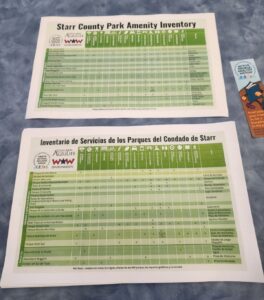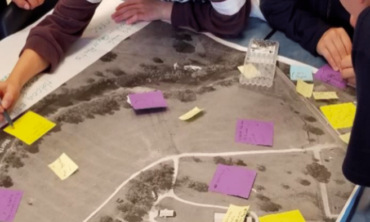By: Valeria Jauregui
How many active parks and places do you think there are in Rio Grande City? Did you know there are at least 17? Did you know the city of Roma has at least three? Parks, schools, plazas and paths can provide most people with a place to be active and spend time with family and friends.
Many people do not know about all the parks in their communities—even in smaller communities. According to Jamie Rae Walker, Ph.D., Texas A&M AgriLife Extension associate professor and urban and municipal park specialist, research says lack of knowledge is one of the barriers people report for why they don’t visit their local parks and active places.
Roma, Rio Grande City, and the city of Eagle Pass are working with Texas A&M AgriLife Extension’s Working on Wellness Environments (WOW-E) program to tie into the CDC’s Active People Healthy Nation (APHN) campaign. This campaign aims to get 27 million more Americans physically active by 2027. The goal of these local efforts is to make residents “in the know” about parks and active places so more can visit and use them to be active, socialize, and enjoy time outdoors.





The campaign is in full swing; here’s what community members have said about it:
“[The billboard] is going to make people think, ‘I want to go find [the parks!]”
“It’s a great source of information and inspiration because people will want to go and find [the parks] and use them.”
Residents of Roma, Rio Grande City, and Eagle Pass can visit tx.ag/parks to learn about parks and other active places like plazas, walking trails, bike lanes, and schools with after-school amenities. The website also includes information about StoryWalk™, a program that allows children and families to get active together while they read a book that is posted page-by-page along a designated route.
Watch your community for more resources, like billboards, maps, posters, and cues around to help you learn about local active infrastructure. For more information, visit tx.ag/parks.
Note: Texas A&M AgriLife Extension’s Working on Wellness Environments (WOW-E) program is funded in part by the Centers for Disease Control (CDC) High Obesity Program.















